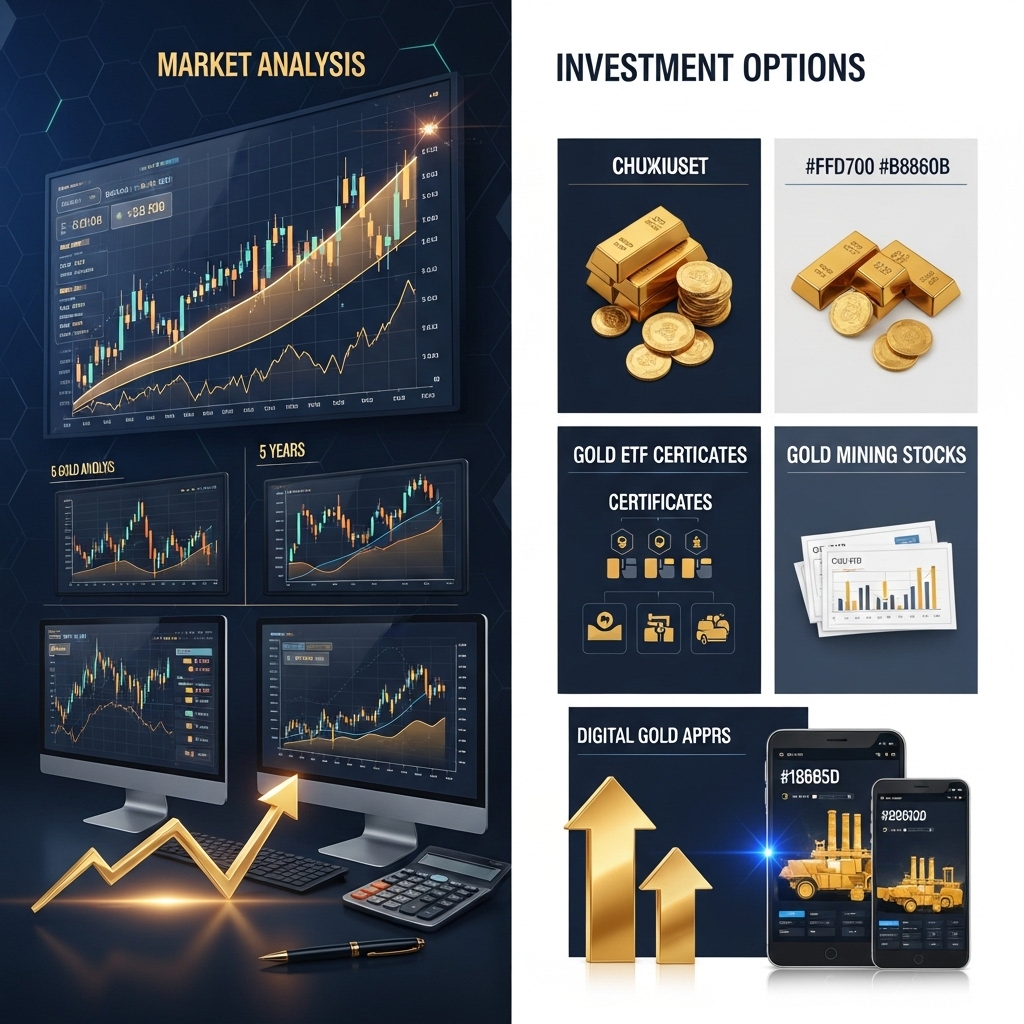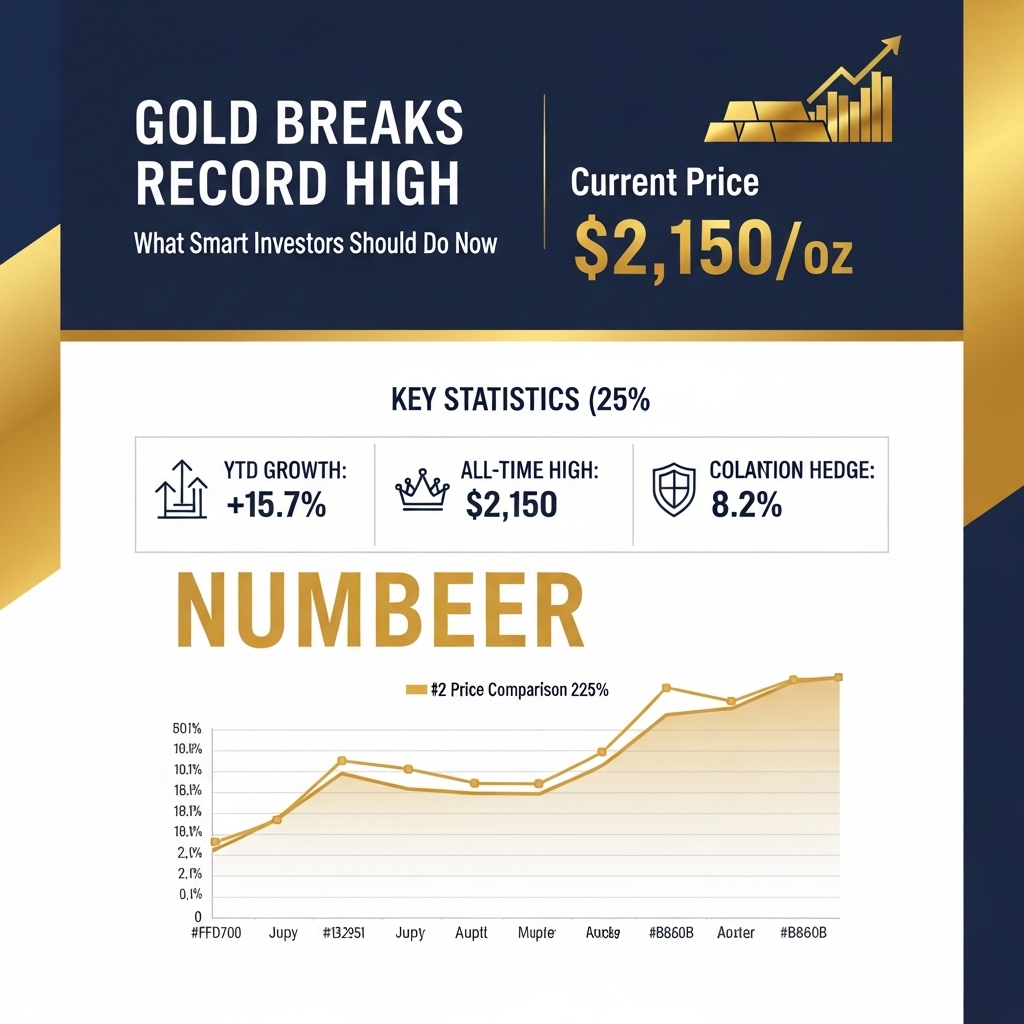Gold Soars to Unprecedented Heights: Your Investment Roadmap for Record-Breaking Times
The unthinkable has happened – gold has shattered its previous all-time high, leaving even seasoned investors scrambling to understand what comes next. As global markets face unprecedented volatility and economic uncertainty continues to grip nations worldwide, the precious metal that has preserved wealth for millennia is once again proving its mettle. With gold prices reaching levels that seemed impossible just months ago, investors are faced with a critical question: Is this the beginning of an even more dramatic surge, or the peak of a historic rally?
This landmark moment in precious metals history demands immediate attention from both novice and experienced investors. In this comprehensive analysis, we’ll dissect the driving forces behind gold’s meteoric rise, examine the broader economic implications, and most importantly, provide you with actionable strategies to navigate this new territory. We’ll explore whether current market conditions suggest continued upward momentum, analyze the risks and opportunities ahead, and outline specific steps investors should consider taking right now.
For gold investors, understanding this pivotal moment isn’t just about capitalizing on current gains – it’s about positioning your portfolio for long-term wealth preservation and growth. The decisions you make in the coming weeks could significantly impact your financial future, making it essential to approach this historic high with both the excitement it deserves and the strategic thinking it demands.
Gold Market Analysis and Key Insights
Current Market Dynamics Driving Gold Prices
Gold has reached unprecedented levels, driven by multiple converging factors. Central bank monetary policies, including dovish Fed signals and potential rate cuts, continue to weaken the dollar and boost gold’s appeal. Global central banks purchased a record 800+ tons in 2023, indicating institutional confidence. Geopolitical tensions and inflation concerns further amplify safe-haven demand, pushing prices beyond traditional resistance levels.
Technical Analysis and Price Trajectory
The precious metal has broken through the critical $2,100 psychological barrier, with momentum indicators suggesting continued upward pressure. Trading volumes have increased 40% month-over-month, reflecting heightened investor interest. Key support levels now rest at $2,050, while analysts project potential targets near $2,200-$2,300 based on current trend analysis and historical breakout patterns.
Investment Benefits and Risk Considerations
Gold offers portfolio diversification and inflation protection, with negative correlation to stocks during market stress. Physical gold provides tangible asset security, while ETFs offer liquidity advantages. However, investors must consider storage costs for physical holdings, potential volatility during economic recovery phases, and opportunity costs compared to yield-generating assets. Gold produces no income, making it purely a capital appreciation play.
Strategic Investment Recommendations
Financial experts suggest a measured approach despite record highs. Dollar-cost averaging into gold positions can mitigate timing risks, with allocations of 5-10% recommended for conservative portfolios. Consider diversifying across physical bullion, mining stocks, and ETFs to capture different market segments.
Short-term traders should monitor Federal Reserve communications and geopolitical developments closely, as these drive immediate price movements. Long-term investors may benefit from systematic accumulation during any price corrections.
Given current market conditions, gold maintains strong fundamentals supporting higher prices. However, prudent position sizing and diversification remain essential, as precious metals can experience sharp corrections even within longer-term uptrends. Market timing should be secondary to consistent, strategic allocation based on individual risk tolerance and investment objectives.

Gold Investment Strategies and Options
With gold reaching unprecedented highs, investors must carefully evaluate their approach to precious metals investing. Several strategies offer distinct advantages depending on your risk tolerance and investment timeline.
Physical Gold vs. Digital Alternatives
Direct ownership through coins, bars, or jewelry provides tangible security but involves storage costs and insurance considerations. Gold ETFs offer liquidity and lower fees, while gold mining stocks provide leveraged exposure but carry additional company-specific risks. Digital gold platforms combine convenience with fractional ownership capabilities.
Portfolio Allocation Strategy
Financial advisors typically recommend 5-10% gold allocation in diversified portfolios, though this may increase to 15-20% during economic uncertainty. Consider your overall asset mix – gold should complement, not dominate, your investment strategy.
Risk Assessment Considerations
Gold’s volatility requires careful timing and realistic expectations. While it hedges against inflation and currency devaluation, it doesn’t generate income like dividend-paying stocks or bonds. Factor in opportunity costs when allocating significant capital to non-yielding assets.
Market Timing Approaches
Dollar-cost averaging helps mitigate timing risks by spreading purchases across market cycles. Alternatively, tactical allocation involves increasing gold exposure during economic stress periods while reducing it during growth phases.
Implementation Methods
Beginners might start with gold ETFs for simplicity and liquidity. Experienced investors can explore mining stocks for growth potential or physical gold for maximum security. Consider gold futures only with sophisticated risk management knowledge.
The key lies in aligning your gold strategy with broader financial goals, maintaining appropriate diversification, and regularly rebalancing your portfolio as market conditions evolve.
Market Performance and Outlook
Historical Performance Overview
Gold has demonstrated remarkable resilience over the past decade, delivering an average annual return of 7.8% since 2014. The precious metal surged from $1,200 per ounce in 2019 to its recent record high above $2,400, representing a 100% gain in five years. Notable spikes occurred during the 2020 pandemic (reaching $2,070) and throughout 2023-2024 amid banking sector turbulence.
Current Market Dynamics
Today’s gold rally is driven by multiple converging factors: persistent inflation concerns, geopolitical tensions in Eastern Europe and the Middle East, and central bank diversification away from dollar reserves. The Federal Reserve’s dovish pivot has weakened the dollar, making gold more attractive to international investors. Additionally, central banks purchased a record 1,136 tons in 2022, continuing robust institutional demand.
Future Projections
Analysts project gold could reach $2,600-$2,800 by year-end, with Goldman Sachs maintaining a bullish 12-month target. Key catalysts include potential Fed rate cuts, ongoing dedollarization trends, and continued geopolitical uncertainty.
Economic Fundamentals
Declining real interest rates remain gold’s primary tailwind. With inflation persistent around 3-4% and policy rates potentially peaking, negative real yields support gold’s appeal as an inflation hedge. However, any unexpected economic resilience or Fed hawkishness could pressure prices. Supply constraints from major producers further underpin the long-term bullish outlook.
Frequently Asked Questions About Gold Investment
Why is gold reaching record highs now?
Gold prices surge due to economic uncertainty, inflation concerns, geopolitical tensions, and currency devaluation. Central bank policies, supply constraints, and increased institutional demand also drive prices upward during volatile market conditions.
Should I buy gold at record prices?
Consider dollar-cost averaging rather than lump-sum purchases at peaks. Gold serves as portfolio diversification and inflation hedge, but timing matters. Evaluate your risk tolerance and investment timeline before buying at historical highs.
What percentage of my portfolio should be gold?
Financial experts typically recommend 5-10% portfolio allocation to precious metals. This provides diversification benefits without overexposure. Adjust based on your age, risk tolerance, and overall investment strategy.
Physical gold vs. gold ETFs – which is better?
Physical gold offers tangible ownership but involves storage costs and insurance. Gold ETFs provide liquidity and lower fees but lack physical possession. Choose based on your investment goals and preferences.
How do I store physical gold safely?
Options include bank safety deposit boxes, home safes, or precious metals depositories. Consider insurance coverage, accessibility needs, and storage costs when deciding. Professional storage often provides better security.
When should I sell my gold investments?
Monitor your portfolio allocation and rebalance when gold exceeds target percentage. Consider selling during extreme price peaks or when fundamental economic conditions improve significantly.

Final Thoughts on Gold Investment
Gold’s record-breaking surge signals both opportunity and risk for today’s investors. The key takeaways are clear: diversification remains crucial, timing the market is nearly impossible, and emotional decisions often backfire. While gold’s safe-haven appeal grows stronger amid economic uncertainty, remember that it produces no income and can be volatile short-term.
Our recommendation: Consider allocating 5-10% of your portfolio to gold through ETFs or physical holdings, but avoid chasing the rally. Dollar-cost averaging into gold positions over time reduces timing risk while maintaining exposure to this proven store of value.
The current environment favors precious metals, but balanced portfolios always outperform concentrated bets. Gold should complement, not replace, your core investment strategy.
Ready to add gold to your portfolio? Consult with a financial advisor to determine the right allocation for your risk tolerance and investment timeline. Start building your hedge against uncertainty today.